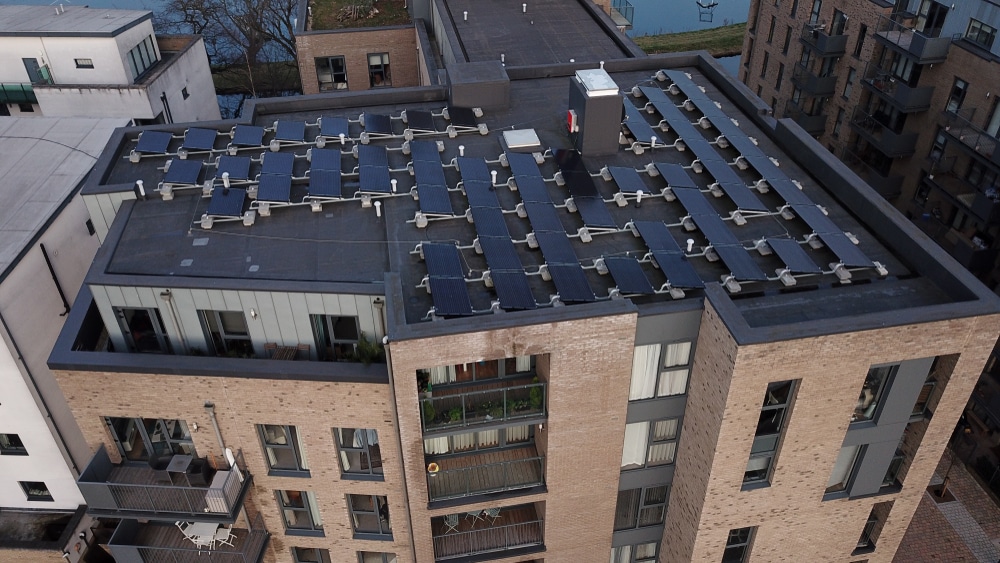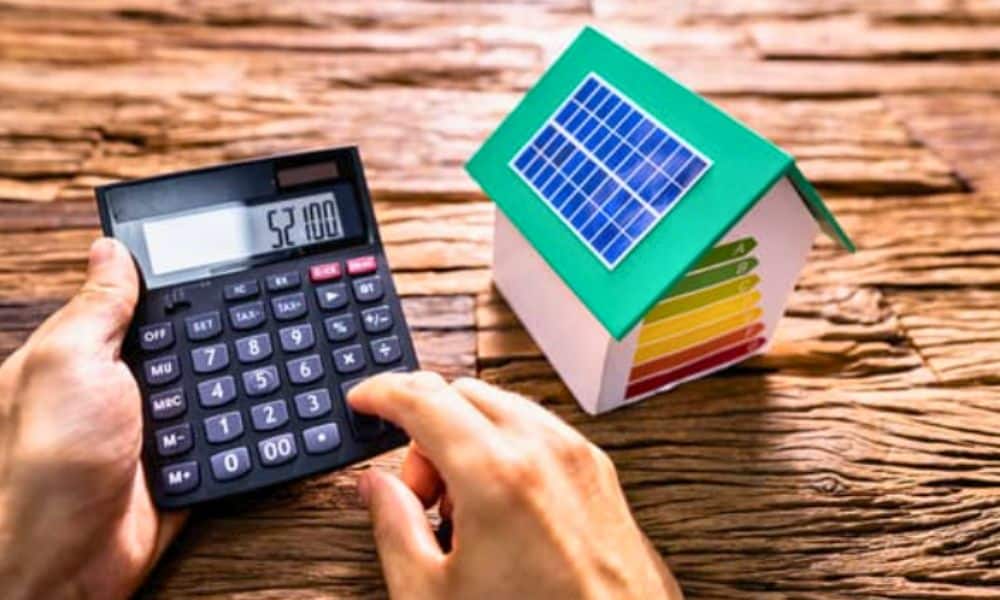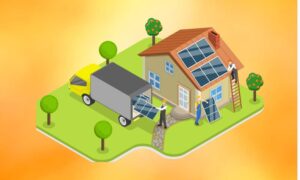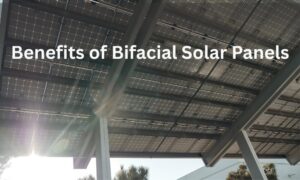Solar energy has become an increasingly popular choice for homeowners and businesses seeking to reduce their carbon footprint and save on electricity bills. Understanding the average solar panel cost and system size is crucial when considering the transition to solar power.
Once considered a luxury, solar panels are becoming increasingly affordable and accessible to homeowners and businesses alike. However, before deciding to invest in solar energy, it’s crucial to understand the factors that influence the cost of solar panel installation.
Are you looking to save money on your electricity bills and reduce your carbon footprint? Solar energy is the perfect solution! Energy Matters can help you get up to 3 FREE quotes from pre-qualified and vetted solar firms in your area.
Energy Matters has been a leader in the renewable energy industry since 2005 and has helped over 40,000 Australian households in their journey to energy independence. With Energy Matters, you can be sure you’re getting the best possible deal on solar energy. We only work with reputable solar firms with a proven track record of delivering high-quality solar systems.
Average solar system size
The size of a solar system is typically measured in kilowatts (kW) and refers to its capacity to generate electricity. The average size of a solar system can vary widely depending on several factors:
Energy needs: Energy consumption is the first and most significant factor influencing solar panel cost through system size. homes or businesses with high energy demands will require larger solar systems to meet their needs adequately. Smaller residential properties might only need a 5kW system, while larger homes may require 10kW or more.
Location: Solar insolation, the amount of sunlight an area receives, varies based on your location. Areas with more sunlight can generate more electricity from smaller systems. Therefore, the average system size in sunnier regions may be smaller than in areas with less solar exposure.
Roof space: The available roof space for solar panels also plays a crucial role in determining system size. If you have limited roof space, install a smaller system or use more efficient solar panels to maximise energy production.
Average solar system cost: Solar panel installation costs
The cost of solar panels has been declining in recent years, and the Australian government offers several rebates and incentives to make solar more affordable.
The costs listed below illustrate the average price of solar panels by installed solar panel size. Don’t be surprised if your quotes for solar panel cost are only valid for a short period due to frequent price fluctuations of panels.
SYSTEM SIZE | Cost Range 2022 | Cost Range 2023 |
3 kW | $6,778 | $3,500 – $5,300 |
4 kW | $8,528 | $3,600 – $7,000 |
5 kW | $10,442 | $4,500 – $8,000 |
6 kW | $12,474 | $4,900 – $9,000 |
7 kW | $14,382 | $5,900 – $11,000 |
8 kW | $16,256 | $7,500 – $12,000 |
10 kW | $20,381 | $9,000– $14,000 |

The cost of a solar system is another critical consideration. Several factors influence the overall cost of going solar:
As mentioned earlier, larger systems cost more than smaller ones. The cost is typically calculated per watt, so that a 10kW system will cost more than a 5kW system. Read more about Solar Panel Sizes, Dimensions And Wattage.
The quality of solar panels, inverters, and other components significantly impacts the system’s cost. High-efficiency panels and advanced inverters may come at a premium price but can provide better long-term performance and reliability.
The installation process requires skilled labour. Labour costs can vary depending on your location and the complexity of the installation. It’s crucial to hire experienced professionals for a safe and efficient installation.
Government incentives and rebates can significantly reduce the upfront cost of a solar system. These incentives vary by location and may change over time, so it’s essential to research the available incentives in your area.
Many homeowners finance their solar systems through loans or leases. The financing option you select can impact the overall cost of going solar, as interest rates and terms vary.
Solar panel costs after the rebate
A solar rebate will save you thousands of money. However, it’s essential to remember that this will still vary based on several factors.
Usually, your solar installer will include a breakdown of the amount of STCs your system will be eligible for and how much money you can get back off the purchase price. This will reflect as an upfront saving for you.
Each STC is around $35-40 and a 6.6. kW system can generate around 60 to 80 STCs, which results in a rebate of thousands.
Additionally, a state-based rebate is also possible, specifically in Victoria, New South Wales, the Australian Capital Territory, South Australia, and the Northern Territory. All of these states have available schemes.
In VIC, homeowners and renters can get a rebate of up to $1,400 for solar system installation. There is also an option for an interest-free loan of up to $1,400 that should be paid over four years.
For NSW, low-income homeowners are eligible for a free 3kW solar system. These are the low-income homeowners that are currently receiving the Low Income Household Rebate and have a Pensioner Concession Card or Department of Veterans’ Affairs Gold Card.
ACT has the Home Energy Support Program that provides up to 50% subsidy of the total cost of a solar rooftop system. Residents may also apply for a zero-interest loan from $2,000 to $15,000 via the Sustainable Household Scheme,
In SA, a Sustainability Incentives Scheme provides rebates for concession card holders and landlords with a property in the City of Adelaide. There are also rebates for shared solar systems for tenants of multi-stores buildings of up to $500 per premises.
In NT, eligible residents can apply for a grant of up to $5,000 for a solar system as well as for batteries and inverters.
So, how much will your solar system cost after the rebate? Let’s take the VIC rebate as an example:
A 6.6 kW system can generate around 60 to 80 STCs. Let’s take the average and assume it generates 70 STCs.
Calculate the rebate amount from the STCs:
Each STC is valued at $37.50.
Total rebate = 70 STCs * $37.50 = $2,625.
Calculate the total rebate amount:
In Victoria, homeowners can get a rebate of up to $1,400. Let’s assume the homeowner qualifies for the full rebate.
Total rebate after state rebate:
$2,625 (STC rebate) + $1,400 (state rebate) = $4,025.
Calculate the final cost of the solar system after the rebate:
Total cost of the solar system – Total rebate = Final cost
Let’s assume the total cost of the system is $10,000.
Final cost = $10,000 – $4,025 = $5,975.
So, after accounting for the rebate, the final cost of a 6.6 kW solar system in Victoria would be $5,975.
Are you tired of being the last to know about renewable energy updates? Did you miss out on a state rebate or incentive? Looking to find out more about how you can save on your utility bills? Subscribe to Energy Matters’ weekly newsletter and keep updated with Australian and international news, incentives, and offers.
Will installing a solar power system pay for itself over time?
Of course, the payback period for a solar system varies depending on the cost of the system, the amount of electricity it generates, and the feed-in tariff (FiT) that you receive for any excess electricity you export to the grid. The FiT is a payment from your electricity retailer for each kWh of solar electricity you export to the grid.
The actual payback period for a solar system will vary depending on the specific circumstances. In most scenarios, investing in solar power, despite the initial solar panel cost, can save homeowners money and diminish their environmental footprint. However, in Australia, solar power systems can generally pay for themselves in as little as 3-5 years.
How long do solar power systems last?
Solar power systems in Australia typically have a 25 to 30-year lifespan. This means they will still produce electricity after this time, although their output may have decreased slightly. The degradation rate of solar panels is typically around 0.5% to 2% per year, so a solar panel that is 25 years old will still be producing about 87% to 95% of the electricity it produced when it was new.
The lifespan of a solar power system can be affected by several factors, including the quality of the solar panels, the installation, the climate, and the amount of maintenance performed. Solar panels installed correctly with high-quality materials will typically last longer than those not. Solar panels in a harsh climate, such as one with high temperatures or dust, may also degrade more quickly. Regular maintenance, such as cleaning the solar panels, can help to extend their lifespan. Read more about How to Make Your Solar Panels Last Longer in Australia.
Read more about solar panels
- Best Solar Panels Brands in Australia to Consider in 2023
- Solar Panel Sizes, Dimensions And Wattage
- Solar Panel Systems in Australia – Tips, Prices & Key Info
- How a grid connected solar power system works
- How to Test, Calculate And Maximise Your Solar Panel Output
- How to Make Your Solar Panels Last Longer in Australia
- Why Solar Is Cheaper Than Electricity – Especially in NSW
Thinking about going solar
When considering a solar system for your home or business, understanding the average system size and cost is essential. Your specific needs, location, and financial situation will all play a role in determining the best solar solution for you. To get an accurate estimate, it’s advisable to consult with a reputable solar installer who can assess your requirements and provide a customised quote.
Reduce energy bills
Environmental sustainability
Energy independence
As technology advances and costs decrease, solar power becomes an even more attractive option for individuals and businesses looking to harness the sun’s energy and contribute to a greener future.
Here are some additional things to keep in mind when considering solar:
- The orientation and tilt of your roof: The amount of sunlight your roof receives will affect the output of your solar system.
- The shading from trees or other objects: Shading can reduce the output of your solar system.
- Your energy usage: The more electricity you use, the larger the solar system you need.
Still can’t afford to switch to solar power?
Are you considering getting solar panels but are currently short on funds? You can still invest wisely, and Energy Matters can help you.
Powow and Energy Matters have teamed up to provide consumers with an alternative to switching to solar power and battery storage.
The biggest obstacle to installing solar and battery storage is typically finance. With Powow’s PPA and VPP, our customers will have a $0 upfront option and financial stability in the uncertain energy market.
Get up to 3 obligation-free quotes by getting in touch with us right away. Find out what payment plan options suit your needs and budget!
Check out our page for Powow: Power Purchase Agreement (PPA) and Virtual Power Plant (VPP).












































